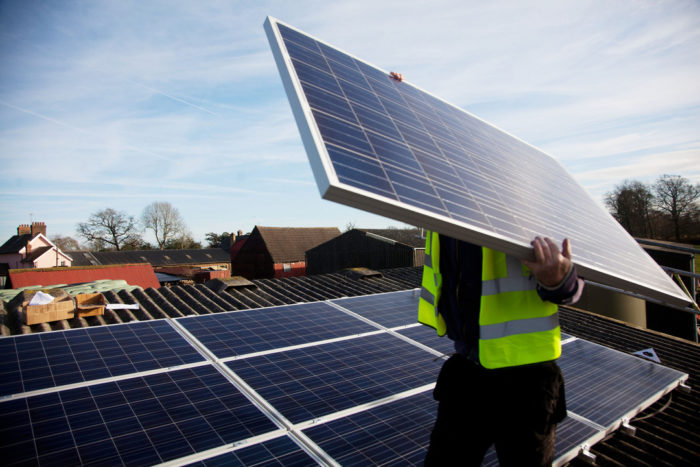
Image Credit: Grange Farm / CC BY 2.0 / Flickr
The number of rooftop photovoltaic (PV) installations has increased dramatically in recent years, but growth is slowing under the weight of market saturation in places like California, financial problems on the part of several solar panel makers, and well-organized lobbying campaigns by the nation’s investor-owned utilities, The New York Times reports.
Utilities complain that net-metering, which allows solar customers to sell their excess electricity to the grid at retail prices, is unfair to customers who don’t have PV arrays of their own because the cost of grid maintenance is spread over fewer people. And the effort by utilities is paying off, The Times reports: almost every state in the country is currently reviewing their solar energy policies while the national fortunes of renewable energy grow dimmer at the same time.
The Edison Electric Institute, a utility lobbying group, is a key player in efforts to blunt the growth of rooftop solar. And now, a former top executive in the group, Brian McCormack, occupies a top post in the U.S. Department of Energy (DOE) as Secretary Rick Perry’s chief of staff.
McCormack is heading up a department review of whether renewable energy is hurting conventional energy providers, a review that some environmental groups fear will alter federal policies that until now have promoted wind and solar energy. The DOE report is due this summer.
The developments worry David Pomerantz, executive director of the Energy and Policy Institute. “There’s no doubt these utilities are out to kill rooftop solar,” he told the newspaper, “and they’re succeeding.”
Lobbying at the state level
Utilities have waged war on net-metering in a number of states, including California, Arizona, Nevada, and Hawaii. Their stated fear is a utility “death spiral” prompted by customers who leave the fold and generate their own power, thereby reducing sales and utility profits.
The Times report focused on efforts in Indiana, where lobbyists turned out this spring to support a bill in the state legislature that would reduce the rates that solar customers were paid for their excess power. A talking point circulated by a local utility lobbying organization claimed that homeowners with solar arrays “avoid paying for use of the grid,” The Times reported. That’s been a familiar theme in state legislatures around the country.
In Indiana, the state’s five investor-owned utilities collectively gave $3 million to mostly Republican candidates over four election cycles. However, the sponsor of this year’s bill, state Senator Brandt Hershman, said that the donations played no part in his position against net-metering. He told the newspaper that he listens to all sides and then promotes “good policy.”
Utilities also have used the American Legislative Exchange Council, a conservative nonprofit that writes model laws that can be introduced in state legislatures, to fight net-metering.
Thomas Kuhn, president of the Edison Electric Institute, warned a January board meeting that rooftop solar continues to be a threat, and said the EEI is ready to help state lawmakers.
“EEI is happy to come to any state at any time. We have two dozen states we are working on,” he said, according to The Times.
Report criticizes EEI lobbying
Efforts by regulated utilities to influence renewable energy policy at the state label were challenged in a report released this spring by the energy watchdog group the Energy & Policy Institute.
ThinkProgress said in a post in May that the Institute’s study found utility customers pay for political and public relations work of utility trade groups.
The report said that regulated utilities include their EEI annual payments in their operating expenses.
“The widespread practice forces ratepayers to pay for political and public relations activities with which they may not agree, and from which they do not benefit,” the report said. “It also has the effect of ratepayers subsidizing the political activities of EEI and other trade associations.”
The report added that utilities “have become adroit” at using the EEI and other trade groups to influence policy while protecting shareholders from most of the associated costs.
“Almost no other political organizations have the luxury of subsidization enjoyed by EEI and other
representatives of the regulated utility industry,” the institute said.
ThinkProgress said that EEI highlights the percentages of costs used for lobbying on invoices to members based on the Internal Revenue Code. That percentage is charged to shareholders with the balance charged to utility customers. An EEI spokesman said the lobbying portion of EEI dues is “not recoverable,” that is, can’t be charged to ratepayers.
“EEI activities in certain regulatory proceedings and communications efforts, for example, are not lobbying as defined by federal law,” the spokesman said.
Weekly Newsletter
Get building science and energy efficiency advice, plus special offers, in your inbox.





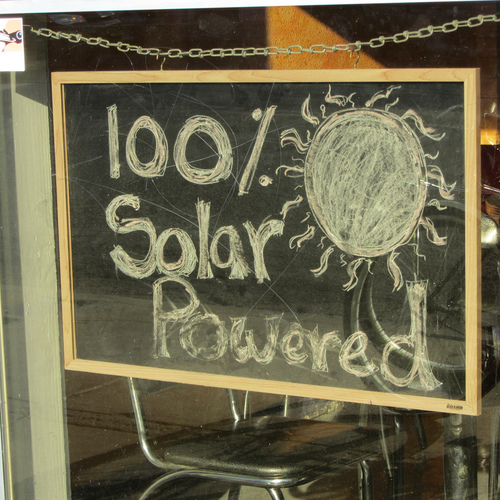
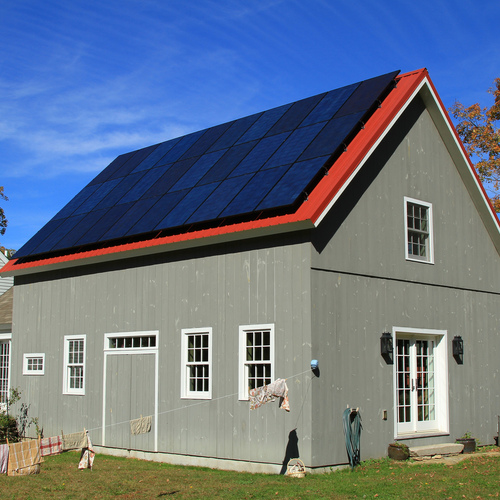
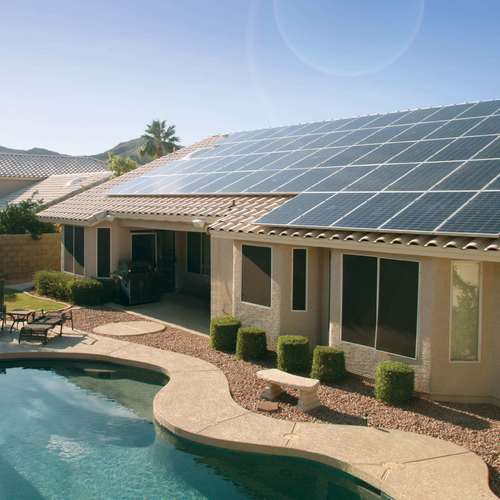
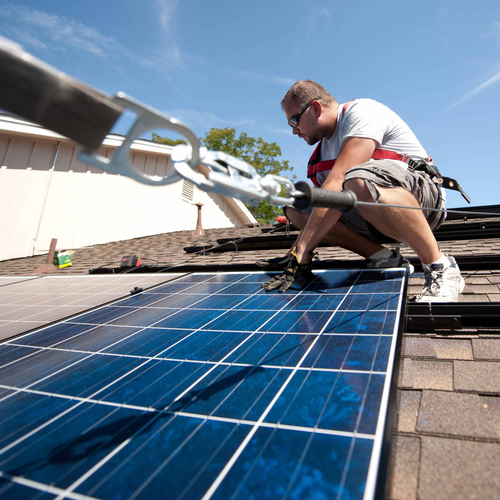






6 Comments
The "solution" will be a political one because
pension funds, of which a large portion are underfunded, as well as mutual funds are heavily invested in utilities. Look for the gov't to force homeowners to connect to the grid and those who have a PV array will have to pay an additional fee.
That being said I don't understand why any utility should be forced to pay retail instead of wholesale prices when buying electricity from homeowners who have PV arrays.
I've never understood that argument
I've never quite understood the argument of "customers with solar aren't paying their fair share of grid maintenance." Maybe someone can help me understand.
You see, my electricity bill has a whole list of charges, but I can generally categorize them like this:
- The flat-fee charges, that don't change month-to-month
- The variable charges, that vary with the number of KWH used, the time of the year (we have summer rate tiers that are different than winter rate tiers, etc.)
Now, since I don't have rooftop solar myself, I'm making the *assumption* that the credit for feeding in electricity can only offset the variable use charges, at most. I'm also assuming that grid maintenance should be a flat-fee charge sort of a thing, at least mostly.
So, if those assumptions are accurate, it seems like the argument "solar customers aren't paying their fair share" is really saying "Our rate structure is messed up, and we're using variable charge money, when we should be using flat-fee money, to maintain the grid". If solar customers were unable to offset those flat-fees, then it largely wouldn't matter, with respect to grid maintenance, how much they generated.
What am I missing? What in my assumptions are wrong? What aspects of grid maintenance actually have costs that vary with the amount of electricity used? Do net metering agreements let customers offset the flat-fees, too?
Response to Lloyd Brown
Lloyd,
Q. "Do net metering agreements let customers offset the flat-fees [monthly minimum charges], too?"
A. No. So one possible response to declining utility revenues is for utilities to raise their monthly minimum fees.
However, monthly minimum fees and a set rate for each kWh doesn't actually reflect utility costs, either. Time-of-use billing systems (systems that vary the cost of a kWh depending on when it is purchased) would be another possible improvement.
Changes to billing methods might help, but they won't solve the problem completely. Due to energy efficiency improvements as well as the spread of PV, utility revenues are in decline. If utilities respond by raising rates, eventually (several years from now) some customers will go off grid and use batteries. That's the "death spiral" scenario.
The rate structures ARE messed up @ Lloyd Brown
Flat fees suck too- are no rate structures that are both perfectly equitable AND simple, but there is a lot of room for improvement. Time of use rates is a really crude band-aid that improves it somewhat, but it's just scratching the surface.
The cost of the distribution & transmission grid is largely related to
... the upfront cost for the capacity, which varies a lot by customer, depending on how long & how fat the wire needs to be to get service to that customer...
...maintenance & repair of the existing infrastructure (poles rot transformers burn out, etc)...
...and the cost of capacity upgrades when PEAK demand goes up.
That's never equitable on a per kwh of energy consumption basis, nor is it on a flat fee basis. In many areas capacity is paid for by commercial & industrial customers by "demand charges", which take the highest consumption within a defined time interval (typically 15 minute or a half-hour) and apply a multiplier per watt for the power used at the interval rate (say, $10 or $25 per kilowatt based on the high-demand period, in addition to energy charges) during the billing period, but that's not perfect either. The real cost to the utility is during peak GRID demand,when the capacity is really needed, which isn't necessarily well correlated to the periods when a particular customer is using the most power.
It's a given that rate structures can never be perfect- do we really want a house a mile down the dirt road from the nearest transformer to be continually on the hook for the poles & wires to keep that connected, whereas the house next to the transformer get's a 50 foot wire, and pays next to nothing? Maybe, maybe not, but rates are designed for simplicity over absolute fairness, and for a sense of fairness that all homes within a service region be allowed to pay the same charges, independent of whether its 53' or 5280' of connection wire. But now it's sometimes it's cheaper for the ratepayers at large to buy a remote customer a PV array and batteries located at the customer's site rather than continuing to maintain the grid connection to them.
Demand charges for residential customers are built into rate options in some utilities in Alaska, and some utilities in other states have been allowed to apply demand charges to customers with rooftop PV. But the latter doesn't reflect the true value that the PV customer is offering other rate payers, which are often difficult to calculate, and varies by it's location on the grid. It also fails to assess the true burdens for non-PV flat-rate customers with huge intermittent loads such as 10 ton air conditioners (often operating during peak grid load hours), or tankless electric water heaters.
It also fails to value that distributed PV generation provides to the grid, and other customers. In most cases a distributed PV array lowers both the average & peak power than needs to traverse the transmission & distribution grids, which ...
...reduces the amount of expensive peak (and less costly average) energy that needs to be generated or purchase by the utility, a net savings to flat-rate customers...
...defers the need for costly grid capacity upgrades...
...lowers the amount of generation that would otherwise have to be built/replaced...
...lowers the wear & tear on transformers & switches, etc. lowering the grid capacity cost...
... has a market effect: the lowered overall demand lowers the peak & average wholesale energy cost for all customers.
In states with mandated CO2 emissions targets it also lowers the price of CO2 abatement for other customers.
In locations with fossil-burner generators it also provides a lower net social cost, for the improved health from lower NOx, SOx, CO2, Hg, emissions, etc.by delivering zero marginal pollution power.
Developing a locational value of distributed solar and applying that to a rate structure really difficult to pull off at the single customer level, but it's possible to apply that to a substation service area level, which may be coming fairly soon in New York. New York utility regulators have peeled the lid off the can o' worms, tossing it up in the air to be sorted out by all stakeholders, which has made it at least possible, and there are more changes to come. The NYC utility Consolidated Edison is saving the ratepayers over USD$1B by subsidizing distributed behind-the meter resources in Brooklyn & Queens, which allows them to defer (probably permanently) substation capacity upgrades that would otherwise be necessary to cover the air conditioning peak loads that are increasing year-on-year. Distributed PV provides HUGE value in some locations such as that, far more than some random location on Long Island or Westchester county, even though there is still considerable value for PV in those other nearby locations.
In the NY-ISO and ISO-New England region the policy wonks at the Acadia Center have developed crude state wide valuations for solar, published in 2015. But it's a moving target and doesn't really attempt to get at the locational value aspects. Even though the valuation will be different in different states/regions, the basic line items work almost everywhere. eg:
http://acadiacenter.org/wp-content/uploads/2015/03/AcadiaCenter_GridVOS_Connecticut_March_2015.pdf
http://acadiacenter.org/wp-content/uploads/2015/10/AcadiaCenter_GridVOS_NewHampshire_FINAL_2015_0904.pdf
http://acadiacenter.org/wp-content/uploads/2015/04/AcadiaCenter_ValueofDistributedGeneration_StudyMethodology_FINAL_2015_0414.pdf
The (now tired straw-man) argument that PV being cross-subsidized by other ratepayers is false for PV, but TRUE for power-pig residential customers with big air conditioners, etc. Yet utilities are (rightly) happy to build out more capacity for the power-pigs since make a guaranteed margin on that capacity upgrade benefit. This needs to be fixed in the electricity regulation framework too. At least for the time being regulators in Massachusetts the regulators are aware of the valuation issues and skeptical of the the cross subsidy argument, and have pushed back whenever utilities have pulled that one out:
https://www.greentechmedia.com/articles/read/massachusetts-new-rate-case-ruling-is-good-news-for-distributed-energy
It varies by state
In Maine, where I live, the grid owner, in my case,Central Maine Power, can't own any generating assets. So my bill includes two charges. One is the charge for electricity, which I can buy from a variety of middlemen, who in turn buy power from owners of generating equipment. At present, electricity costs about 7 cents per kwh.
CMP charges me for delivery. I pay $12.88 for the first 50 kwh. I also pay about 6.7 cents per kwh for delivery of every kwh over 50.
My net metering deal means I pay the $12.88 every month, whether my net pv production exceeds net use or not. I also get credit at full retail for both delivery and power. Thus, if over the course of a year I produce more than I use, my total annual cost is $12.88 x 12.
Be glad they don't hit you with demand charges @ stephen sheehy
That $12.88/month isn't paying for much grid infrastructure, so CMP could try to make a rate case with the regulators for demand charges if you end up at Net Zero Electricity. If you run a clothes dryer after dark with the PV is putting out nada, demand charges could easily quadruple your bill, even if the net kwh is negative (net exporter to the grid.)
There have been multiple value of solar studies in Maine in recent years, and the value of solar is still pretty high- quite a bit higher than grid-retail in most studies, including the one done by the PUC in 2015:
https://www.nrcm.org/wp-content/uploads/2015/03/MPUCValueofSolarReport.pdf
The Acadia Center has also stayed on top of trends in Maine, and supplied commentary on CMP rate cases in recent years, eg:
http://acadiacenter.org/wp-content/uploads/2014/09/2013168ENEltr.070714.pdf
Log in or create an account to post a comment.
Sign up Log in